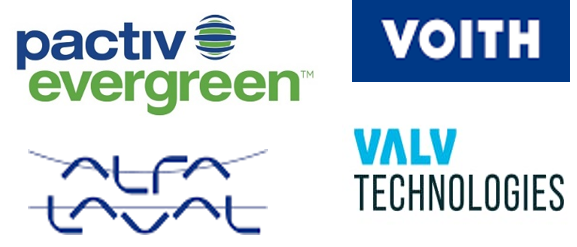Market Overview:
"The global hydraulic tiltrotator market was valued at US$ 921.2 million in 2024 and is expected to register a CAGR of 6.1% over the forecast period and reach US$ 1,569.6 million in 2033."
|
Report Attributes |
Details |
|
Base Year |
2024 |
|
Forecast Years |
2025-2033 |
|
Historical Years |
2021-2024 |
|
Hydraulic Tiltrotator Market Growth Rate (2025-2033) |
6.1% |
Hydraulic tiltrotator is an innovative attachment used in construction machinery such as an excavator's arm or beneath the excavator's quick hitch and combines hydraulic tilting and rotating capabilities. It allows the operator to tilt and rotate the attached tool or bucket, enhancing the versatility and efficiency of the equipment. This technology offers numerous benefits, including increased productivity, improved precision, reduced fuel consumption, and enhanced safety.
Various types of hydraulic tiltrotators available to suit different needs include fully hydraulic tiltrotators, mechanical/hydraulic tiltrotators, and proportional hydraulic tiltrotators. Each type offers unique features and functionalities, allowing contractors to choose the most suitable option based on their specific requirements.
The global hydraulic tiltrotator market revenue is registering significant growth due to increasing construction and infrastructure development projects and initiatives globally. Also, factors such as rapid urbanization, renovation projects, and the need for efficient earthmoving equipment are driving market growth. Advancements in technology, such as integration of smart features and remote-control capabilities, are further driving market growth. Increased adoption of hydraulic tiltrotators in industries such as construction, mining, and landscaping, coupled with government initiatives for infrastructure development, are expected to continue to support revenue growth of the market.
Compliance with safety regulations and environmental standards is also a crucial aspect of the market, promoting the development of sustainable and efficient tiltrotator solutions.
Hydraulic Tiltrotator Market Trends and Drivers:
Increasing Construction Activities: Rapid growth in construction and infrastructure projects worldwide are driving rising demand for hydraulic tiltrotators. These attachments enhance the efficiency and versatility of construction machinery, leading to increased revenue for manufacturers and suppliers. Increasing need for such attachments is driving steady revenue growth of the market.
Technological Advancements: Continuous advancements in hydraulic tiltrotator technology, such as integration of smart features, remote control capabilities, and improved precision, contribute to higher adoption rates. These innovations attract customers and create new revenue streams for companies operating in the market.
Government Initiatives: Government initiatives promoting infrastructure development, especially in emerging economies, are boosting demand for hydraulic tiltrotators. Investments in new roads, bridges, railway networks, and urban development projects also create opportunities for companies and drive revenue growth of the market.
Focus on Operational Efficiency: Rising emphasis on operational efficiency and productivity in industries such as construction and mining are driving adoption of hydraulic tiltrotators. These attachments enable faster and more precise material handling, leading to improved efficiency and speed of completing tasks and projects.
Increasing Awareness of Benefits: As the awareness of various benefits offered by hydraulic tiltrotators increases, more customers will be inclined to invest in these attachments. Advantages, such as increased productivity, reduced fuel consumption, enhanced safety, and versatility, positively impact revenue growth of the global hydraulic tiltrotator market.
Hydraulic Tiltrotator Market Restraining Factors:
High Initial Investment: The cost of hydraulic tiltrotators can be relatively high, which can deter some potential buyers and investors. The initial investment required for purchasing and installing these attachments can act as a restraint, and impact potential revenue growth of the market.
Economic Uncertainty: Economic downturns or recessions can lead to a decrease in construction activities, which directly affects demand for hydraulic tiltrotators. Uncertain market conditions and reduced construction budgets can negatively impact revenue growth of the global market.
Limited Awareness and Education: Lack of awareness and knowledge about the benefits and applications of hydraulic tiltrotators among end-users can limit their adoption. Insufficient education and training on the proper use and advantages of these attachments may restrain revenue growth.
Competitive Market Landscape: The global hydraulic tiltrotator market is highly competitive, with several players accounting for market share. Intense competition can lead to price wars and reduced profit margins, thereby affecting revenue growth for companies operating in the market.
Maintenance and Repair Costs: Hydraulic tiltrotators require regular maintenance and occasional repairs, which can add to the overall cost of ownership. Higher maintenance and repair costs may deter some customers from investing in these attachments, and impact revenue growth.
Hydraulic Tiltrotator Market Opportunities:
Expansion into Emerging Markets: Companies can explore opportunities in emerging economies with significant infrastructure development plans. By expanding their presence in these markets, companies can tap into new revenue streams and gain a competitive advantage.
Product Differentiation: Developing innovative and unique features in hydraulic tiltrotators can help companies differentiate their offerings. This can attract customers seeking advanced functionality, creating opportunities for higher revenue and market share.
After-Sales Services: Offering comprehensive after-sales services, including maintenance, repair, and spare parts support, can be a significant revenue stream. Providing reliable and prompt service to customers enhances customer satisfaction and loyalty.
Partnerships and Collaborations: Collaborating with equipment manufacturers, dealers, and distributors can help expand the market reach and create new revenue streams. Strategic partnerships can provide access to a broader customer base and enhance market penetration.
Focus on Rental Market: The rental market for construction equipment is growing, and companies can capitalize on this trend by offering hydraulic tiltrotators for rent. Providing flexible rental options and competitive pricing can attract customers who prefer renting rather than purchasing equipment, leading to additional revenue streams.
Hydraulic Tiltrotator Market Segmentation:
By Types:
- Fully Hydraulic Tiltrotators
- Mechanical/Hydraulic Tiltrotators
- Proportional Hydraulic Tiltrotators
By Applications:
- Excavators
- Backhoe Loaders
- Skid Steer Loaders
- Others
By End-User Industries:
- Construction
- Mining
- Landscaping
- Agriculture
- Forestry
- Others
By Size Range:
- Small (Up to 5 tons)
- Medium (5-15 tons)
- Large (Above 15 tons)
By Control System:
- Manual Control
- Hydraulic Control
- Electric Control
- Remote Control
Hydraulic Tiltrotator Market, By Region:
North America:
- United States
- Canada
Europe:
- Germany
- United Kingdom
- France
- Italy
- Spain
- Russia
- Poland
- BENELUX
- NORDIC
- Rest of Europe
Asia Pacific:
- China
- Japan
- India
- South Korea
- ASEAN
- Australia & New Zealand
- Rest of Asia Pacific
Latin America:
- Brazil
- Mexico
- Argentina
- Rest of Latin America
Middle East & Africa:
- Saudi Arabia
- South Africa
- United Arab Emirates
- Israel
- Egypt
- Rest of MEA
Countries such as the US and Canada, North America accounts for a significantly large market share in the global hydraulic tiltrotator market. The region registers steady revenue growth due to increased construction activities, preference for advanced construction equipment, and government initiatives supporting infrastructure development. Also, presence of major manufacturers of hydraulic tiltrotators in North America, including Engcon Holding AB, Steelwrist AB, Rototilt AB, and SMP Parts AB, among others is a key factor supporting demand and driving revenue growth.
Europe market share increase is supported by steady revenue contribution from countries such as Germany, France, and the UK, which exhibit strong demand for hydraulic tiltrotators. The market in Europe has a mature construction industry, needs to comply with stringent safety regulations, and advancements in tiltrotator technology are expected to continue to support revenue growth.In addition, growing investments in infrastructure projects are expected to contribute to market revenue growth over the forecast period.
Asia Pacific market share is increasing rapidly, driven by major revenue contribution from China, India, and Japan. The number of manufacturers of hydraulic tiltrotators in countries in Asia Pacific varies, as the market is dynamic and subject to changes. However, there are several manufacturers operating in Asia Pacific, catering to steady demand for hydraulic tiltrotators. Rapid urbanization, infrastructure development initiatives, and the growing construction sector are expected to continue to drive demand. Increasing awareness of the benefits of hydraulic tiltrotators is also supporting market revenue growth.
Leading Companies in Hydraulic Tiltrotator Market & Competitive Landscape:
The landscape in the global hydraulic tiltrotator market is highly fragmented, with several key players competing for market share. These companies focus on product innovation, technological advancements, and strategic partnerships to gain a competitive edge. The market is characterized by intense competition, price wars, and a constant drive for differentiation.
Company List:
- Engcon AB (Sweden)
- Rototilt Group AB (Sweden)
- Steelwrist AB (Sweden)
- OilQuick AB (Sweden)
- SMP Parts AB (Sweden)
- KINSHOFER GmbH (Germany)
- HKS Dreh-Antriebe GmbH (Germany)
- Lehnhoff Hartstahl GmbH (Germany)
- MTS Schrode AG (Germany)
- Liebherr Group (Germany/Switzerland)
- Caterpillar Inc. (USA)
- Marttiini Metal Oy (Finland)
- Yanmar Holdings Co., Ltd. (Japan)
- Doosan Infracore / Develon (South Korea)
- Hyundai Construction Equipment (South Korea)
- Giant Hydraulic Tech Co., Ltd. (Taiwan)
- Catsu Hydraulic Co., Ltd. (China)
Research Scope:
|
Report Metric |
Report Details |
|
Hydraulic Tiltrotator Market Size available for the years |
2021-2033 |
|
Base Year |
2024 |
|
Forecast Period |
2025-2033 |
|
Compound Annual Growth Rate (CAGR) |
6.1% |
|
Segment covered |
By Types, Applications, End-User Industries, Size Range, Control System, and Regions |
|
Regions Covered |
North America: The U.S. & Canada Latin America: Brazil, Mexico, Argentina, & Rest of Latin America Asia Pacific: China, India, Japan, Australia & New Zealand, South Korea, ASEAN, & Rest of Asia Pacific Europe: Germany, The U.K., France, Spain, Italy, Russia, Poland, BENELUX, NORDIC, & Rest of Europe The Middle East & Africa: Saudi Arabia, United Arab Emirates, South Africa, Egypt, Israel, and Rest of MEA |
|
Fastest Growing Country in Europe |
Germany |
|
Largest Market in Asia Pacific |
China |
|
Key Players |
Engcon AB, Rototilt Group AB, Steelwrist AB, OilQuick AB, SMP Parts AB, KINSHOFER GmbH, HKS Dreh-Antriebe GmbH, Lehnhoff Hartstahl GmbH, MTS Schrode AG, Liebherr Group, Caterpillar Inc., Marttiini Metal Oy, Yanmar Holdings Co., Ltd., Doosan Infracore (Develon), Hyundai Construction Equipment, Giant Hydraulic Tech Co., Ltd., Catsu Hydraulic Co., Ltd. |
Frequently Asked Question
What are some factors driving revenue growth of the global hydraulic tiltrotator market?
Some key growth drivers in the market include increasing construction activities, technological advancements in tiltrotator technology, government initiatives supporting infrastructure development, focus on operational efficiency, and growing awareness of the benefits of hydraulic tiltrotators. Positive changes in these Hydraulic Tiltrotator market trends are expected to propel market growth.
Which end-user industries are registering major demand for hydraulic tiltrotators?
Demand for hydraulic tiltrotators is primarily driven by the construction, mining, landscaping, agriculture, and forestry industries. These sectors require efficient material handling equipment to enhance productivity and improve operational efficiency.
What are some challenges in the global hydraulic tiltrotator market?
Some significant challenges in the market include high initial investment costs, economic uncertainties impacting construction activities, limited awareness and education about the benefits of hydraulic tiltrotators, intense competition among market players, and maintenance and repair costs associated with these attachments.
How is the competitive landscape in the global hydraulic tiltrotator market?
The competitive landscape in the market is highly fragmented, with several key players competing for market share. Companies focus on product innovation, technological advancements, strategic partnerships, and after-sales services to gain a competitive edge in the market.
What are some opportunities for companies operating in the global hydraulic tiltrotator market?
Companies operating in the market can explore opportunities by expanding into emerging markets, focusing on product differentiation through unique features, offering comprehensive after-sales services, forming strategic partnerships and collaborations, and tapping into the growing rental market for construction equipment.

